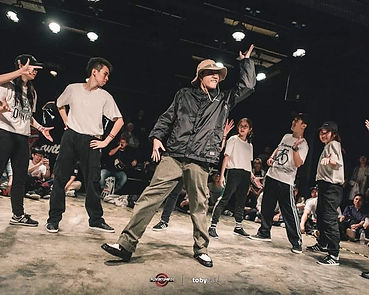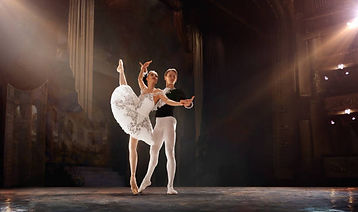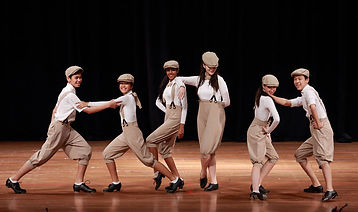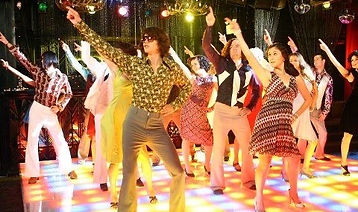
Let's Dance
Pick a music & dance!
Hip hop & Funk dance
Breakdance (Breaking)
One of the most athletic dances in the world, Breakdance, have originally found its popularity in the 1970s as the street dance in the New York’s Bronx. Since then it has spread all around the world where it was viewed as one of the most unique dance styles ever made. Usually danced solo, this dance requires talented dancers to perform the series of either choreographed or freeform dance and athletic movements alongside usually breakbeat, hip-hop or funk music.
Bounce
Born in the 1980s as a mix of New Orleans hip-hop music and the traditions of the Mardi Gras Indian chants, Bounce dance can today be danced both in its common and hypersexual form. Since it is so closely connected with the traditions of the Mardi Gras culture, many forms of Bounce today remain to be highly regional and can rarely be seen dancing outside of the music scenes of New Orleans, Miami, Baltimore, and other music hubs.
Electric Boogaloo
Funk style of hip-hop was popularized not only by its music but also by the worldwide acceptance of the famous dance style called Electric Boogaloo, which was originally promoted in the 1970s by the dance group of the same name. Danced both by individuals and groups in both free form and choreographed manner, Electric Boogaloo is filled with the wide variety of moves that focused on the movement of legs, hips, knees and frequent use of exaggerated robotic-like moves.
Street Jazz
Created with the influences of African American slaves, Jazz dance gained popularity in the early 20th century as any form of dance that was performed alongside then new Jazz music. Highly improvisational and freeform, Jazz dance quickly morphed into a performance dance that emulated elements of ballet. Today, Jazz dance is enjoyed in many forms which are collectively called “modern jazz dance”.
Locking
Funk dance is incredibly diverse, and one of its famous variations is “locking”. The core gimmick of this style of hip-hop dance is to suddenly stop and hold the position (or get locked) in the middle of dance routines for a short while, and then suddenly resume the dance. It requires full body motion, but most of the dance is focused on top half of the body. Many Locking dancers prefer to use various acrobatic and physically demanding moves to augment their dance routines.
Popping
Very close in style with popular Electric Boogaloo, Popping is another variation of the funk-themed street dance from the 1960s and 1970s that found popularity all around the world. The technique that dancers need to master to properly dance Popping is controlled and quick contrasting and relaxing of muscles that will create the feeling of a jerk throughout the body. This jerk is referred as “pop” or “hit” and can be used to augment dance routines, movements and possess.
Hiphop
Hip hop is a style of dance that originated on the East Coast in the late 1970s in the Bronx, New York City. Groups of people would often perform the dances in the streets, clubs, and underground venues of New York. It evolved closely with many other elements of hip hop—like DJing, graffiti writing, and MCing—and borrowed certain signature elements from the funk styles of the 1960s.
Waacking
Waacking is an extremely expressive, free and musical form of dance that is characterised by arm movements and posing with a strong emphasis on musicality and improvised performance. ... Waacking battles, similar to other dance styles such as “locking” and “house”, are a transplant of “hip hop” battles.
Professional Performance Dance
Ballet
Ballet is without any doubt one of the most highly technical and famous of all performance dances. It was originally created in 15th century Renaissance Italy, but it received popularization in countries such as France and Russia. It’s incredible popularity and influence has had a profound impact on techniques found in many other dances, and has even morphed the cultural histories of many countries around the world.
Contemporary Dance
Contemporary dance is a highly complicated type of modern performance dance that originated in the mid-20th century as an alternative to classical dance styles (such as ballet), modern styles (free dance) and Jazz dance. Its focus on free leg movement, strong stress on the torso, disordered choreography, unpredictability, multiple and simultaneous actions, improvisation, and non-standardized costumes, sets, and lighting has pushed this dance into the forefront of modern art dance scene.
Tap Dance
Among many types of popular dances around the world, tap dance may be one of the most unusual dances. Instead of focusing on body movements and dancing with a partner, tap dance is characterized by the creation of percussion-like musically-focused rhythm performance using tap shoes striking on the floor in accordance with the dancing music.
Modern Dance
House Dance
After the years of popularity of Disco, the genre of House music and house dance became born in New York and Chicago clubs. Built on top of subtler rhythms, riffs of the music and influences of jazz, Latin, soul, funk, R&B, and many other music styles, this social dance quickly found its way into homes and clubs across the entire world.
Punk Dance
Born as an extension of 1960s garage rock, the punk rock managed to attract fans who enjoyed not traditional social dances of before, but more energetic and sometimes violent dance style of moshing (sometimes called slam-dancing) and headbanging. This dance styles were characterized by the strong and full body contact of live band audience, with frequent bumping and jostling both alone and in groups.
Disco Dance
The popular disco music genre of the 1970s would not found such popularity if it was not so easy to dance with. Fans of this music often wore extravagant and sexy clothing while dancing free form or structured versions of various disco dances, such as Bump, (several variations of) Hustle, Robot, Boogaloo, Watergate, and others.
Bollywood Dance
The cultural history of India and the rest of southern Asia would not remain the same without the strong influence of Bollywood movie industry which has promoted Hindi dance music to the world. Created as the mix of traditional Indian music, Hindi dance traditions of the Indian sub-continent, and Middle-Eastern techniques, Bollywood dance is characterized by elaborate choreographies, energetic movements, and dances that involve a large number of participants.















